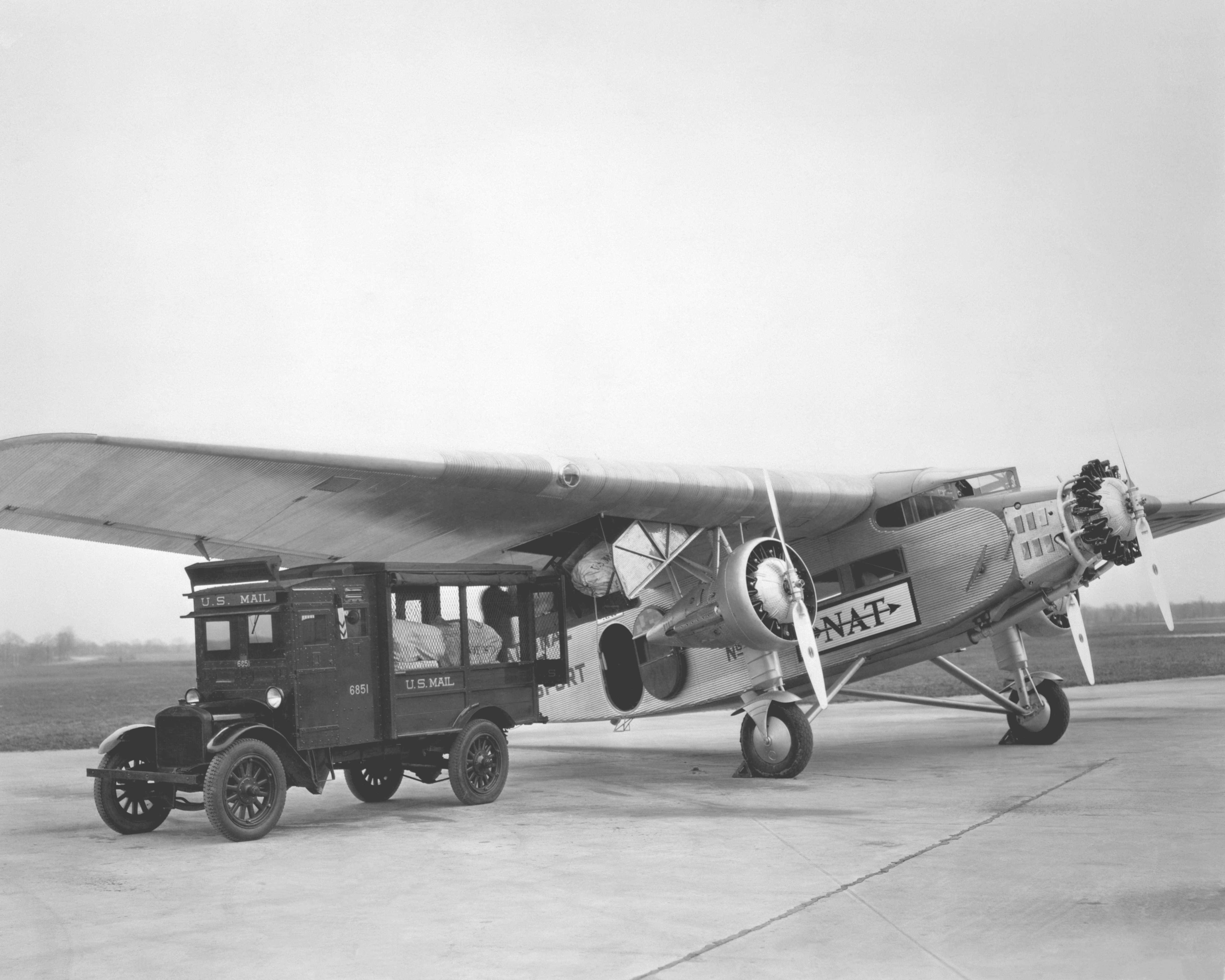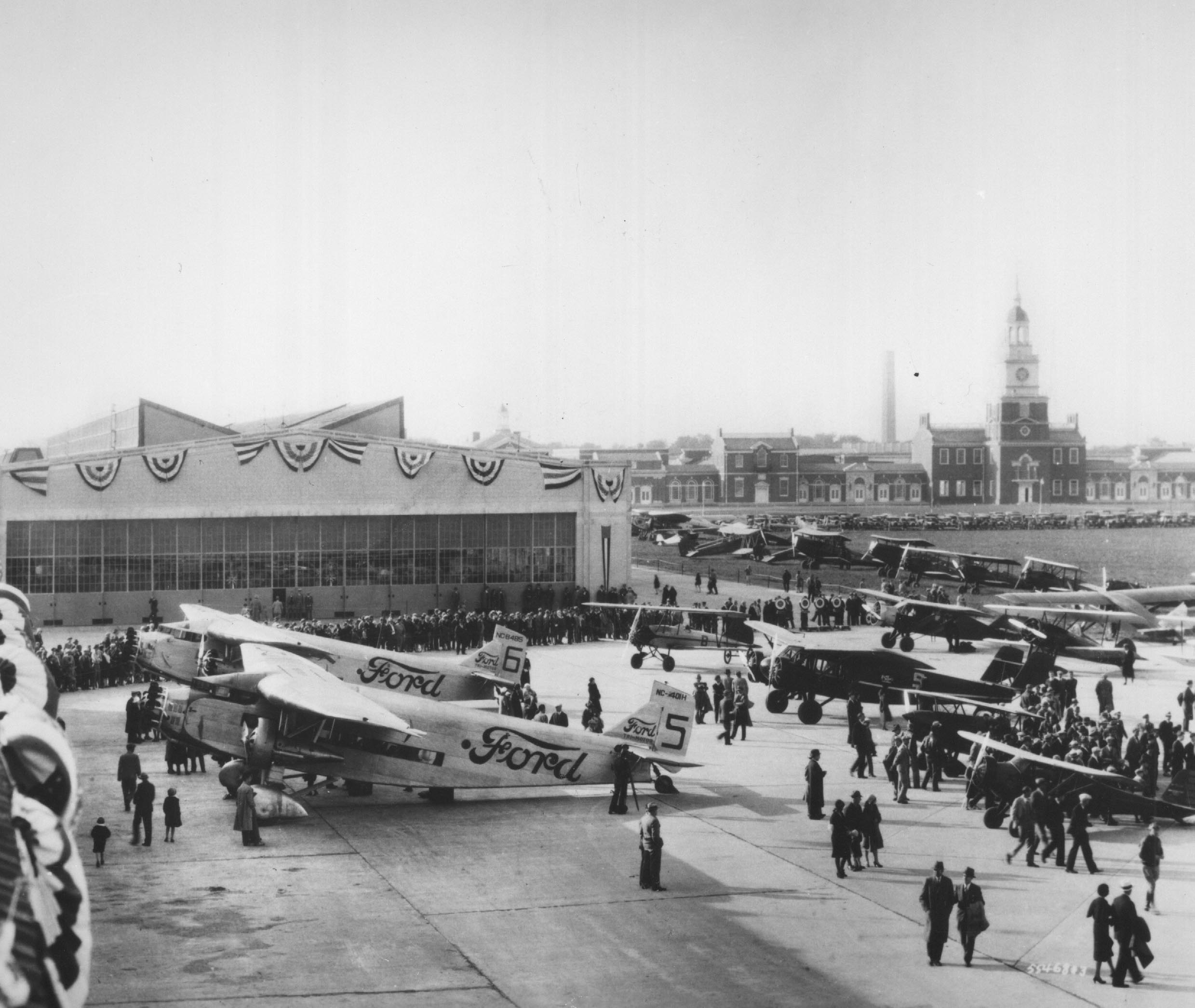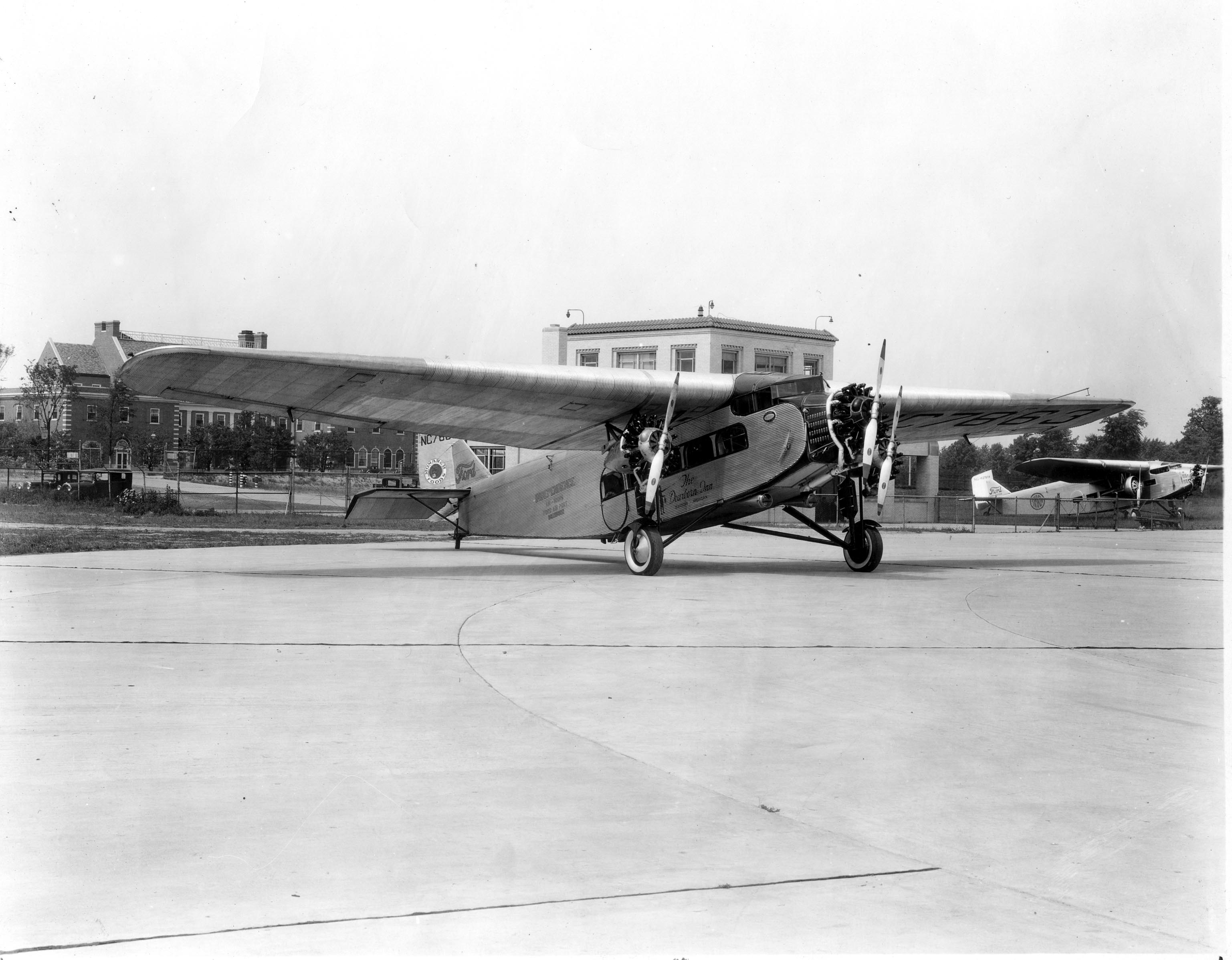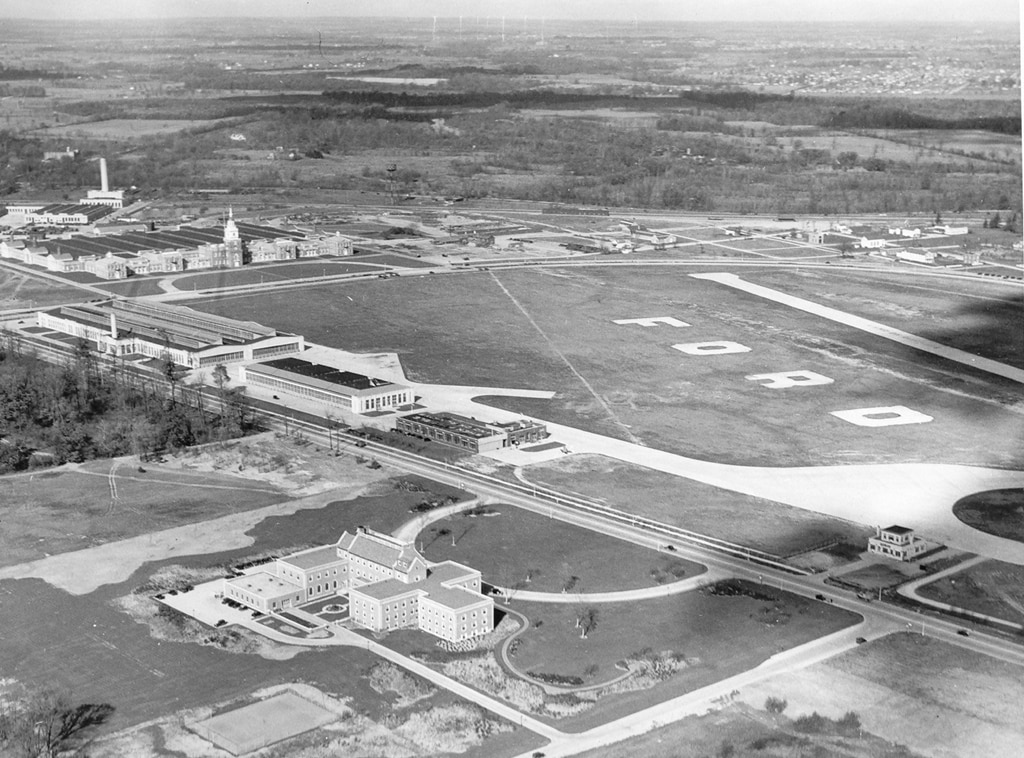While Henry Ford is well known for putting the world on wheels, you might be surprised to learn that he also had a lot to do with putting America in the air. Ford’s interest in the growing field of aviation began during World War I, when Ford Motor Company built Liberty engines for airplanes. A partnership formed in 1923 between Edsel Ford and William Mayo, of the Stout Metal Airplane Company, created the need for an airplane factory and adjacent airstrip in Dearborn and cemented Ford’s place in the burgeoning aviation industry.
Henry Ford and Mayo selected a 260-acre parcel of land along Oakwood Boulevard for the factory and airstrip, and quickly broke ground on the Ford Airport, which was designed by Albert Kahn and dedicated on January 15, 1925. Flights in and out of the Ford Airport transported passengers, automotive cargo, and U.S. mail to other small airports around the Midwest. It was also the first airport to offer limousine service to arriving passengers, transporting people by Model T bus to nearby Detroit. The airport was home to a state-of-the-art dirigible mooring post, which stood for more than 20 years and was removed in 1946, when the inherent dangers of dirigibles outweighed their usefulness.

The airplane factory completed its first Ford Tri-motor airplane on November 1, 1925. The all-metal, multi-engine design was dubbed the “Tin Goose” by pilots and was quickly adopted by commercial lines. Nearly 200 Tri-motor planes would eventually be built at the Airport factory, featuring continual improvements, such as greater horsepower and flight speed, cabin soundproofing, increased safety and passenger comfort, and larger load-carrying capability. The first plane to fly over the South Pole was a Ford Tri-motor and that historic aircraft is currently on display at the Henry Ford Museum.

In an effort to popularize air travel, Mayo and the Fords created the National Air Reliability Tours, later known as the Ford Reliability Tours, that saw many planes and hundreds of spectators descend upon the Ford Airport. The annual tours, which started and ended at the Ford Airport, ran for seven years and challenged pilots and their aircraft to complete a fixed schedule over many designated legs of increasing distances. The public was welcome to see the planes and meet the pilots during their stops at the Ford Airport.
To house and feed the many passengers that flew in and out of the Ford Airport, the Fords opened one of the first airport hotels, the Dearborn Inn, in 1931 across Oakwood Boulevard. Designed by Albert Kahn in the Georgian architectural style, the main Inn sits on 23 acres alongside five replica guest homes that were added in 1937. The hotel also features a large ballroom, which Henry Ford intended as a space for guests and friends to practice his favorite pastimes of ballroom and square dancing. The Dearborn Inn recently reopened after a major renovation of its guest rooms and restaurants.

The stock market crash in 1929 spelled disaster for the aviation industry, and Tri-motor sales dropped significantly, causing the end of their production. Ford Airport operations dwindled until it closed for good in 1947, after 22 years of welcoming many passengers and flights. The land was eventually repurposed as Ford Motor Company’s test track and the last airport building was removed in 2018.
Leslie Armbruster is an archives manager at Ford.

